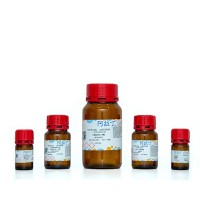Biochemical Assays for Studying Indirect Interactions Between CFTR and the Cytoskeleton
互联网
317
One approach for understanding the regulation of CFTR and determining how CFTR regulates the activity of other ion channels is to identify CFTR-associated proteins at the apical membrane of airway epithelia. The development of improved methods for studying protein interactions has led to the identification of cytoskeletal-associated scaffolding proteins involved in organizing plasma membrane microdomains and forming multiprotein complexes important for efficient regulation of ion channels and transporters. Many plasma membrane-associated scaffolding proteins contain one or more PDZ domains, conserved 90-100-amino acid protein interaction modules first described in the postsynaptic density protein PSD95, the Drosophila tumor suppressor dlg-A, and the tight junction protein ZO-1 (reviewed in refs. 1 and 2 ). PDZ domains typically mediate interactions with the COOH termini of proteins terminating in consensus PDZ-binding sequences (E-S/T-X-V/I), although other types of interaction also occur. While some data suggest that CFTR may bind directly to the actin cytoskeleton (3 ), recent experiments indicate that CFTR interacts indirectly with the cytoskeleton via subapical scaffolding proteins that contain PDZ domains (4 -7 ). In this chapter we review in vitro binding assays for studying interactions between CFTR and epithelial scaffolding proteins.









